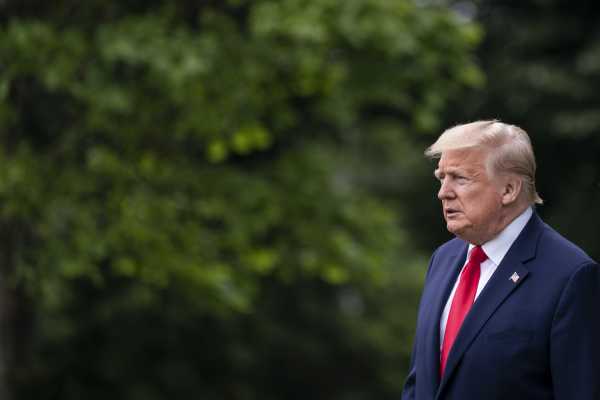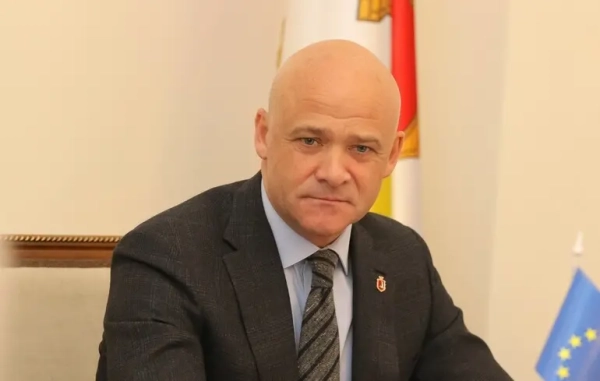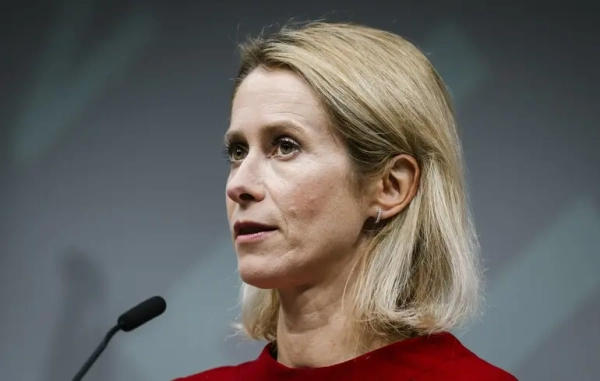
Despite an emotional plea from her widower, Twitter has declined to delete tweets sent by President Donald Trump insinuating MSNBC host Joe Scarborough murdered a former employee while serving in the US House of Representatives.
Timothy Klausutis, husband of the late Lori Klausutis — who worked as one of Scarborough’s staffers when he represented Florida’s First District — asked Twitter chief executive Jack Dorsey to remove a series of tweets the president has sent about his wife’s death in a powerful letter last week.
Klausutis wrote that there has been “a constant barrage of falsehoods, half-truths, innuendo and conspiracy theories since the day she died” and expressed frustration with the fact that “conspiracy theorists, including most recently the President of the United States, continue to spread their bile and misinformation on your platform disparaging the memory of my wife and our marriage.”
He also asked Twitter’s leader to consider his feelings — “I am now angry as well as frustrated and grieved,” he wrote — as well as the feelings of his late wife’s relatives, some of whom are too young to have met her. “It pains me to think they would ever have to ‘learn’ about her this way,” he wrote.
Trump has latched onto a baseless conspiracy theory about Lori Klausutis’s death as a means of attacking Scarborough, who has become one of his most vocal media critics. Although police have determined no foul play was involved in her death, Trump has suggested otherwise for several years and has worked to publicize the issue in recent weeks with tweets like one he sent on May 12: “Did he get away with murder? Some people think so.”
Since then, the president — and his son Donald Trump Jr. — have both repeatedly suggested the television host killed his former staffer. Trump even did so again Tuesday morning, hours after Klausutis’s letter began to receive national attention.
Days after Klausutis asked the social media platform to remove the president’s tweets, CNN’s Donie O’Sullivan reported that Twitter declined the request without giving a reason, though the company said it was “deeply sorry” for the pain Trump’s tweets have caused the family.
Twitter’s decision to leave the tweets up is in line with its policy, one that considers world leaders’ tweets as inherently “newsworthy” and ungovernable by the platform’s normal terms of service — even if they are in clear violation of those rules. As many of his tweets have, Trump’s allegations of murder do violate Twitter’s terms of service, as Klausutis’s letter points out.
The president has used this special privilege to make a number of baseless attacks against his political enemies and media critics. The tweets about Scarborough are merely the latest example of this. With followers that have long been fed by sites promoting conspiracy theories such as QAnon, Trump has never been afraid to stoke the paranoid fantasies of some of his followers for political gain — and it has proven a successful means of energizing this base.
There is no evidence connecting Scarborough with Klausutis’s death
The details surrounding Lori Klausutis’s death are clear and definitive, but that hasn’t stopped conspiracy theorists from speculating that Scarborough was involved from the case’s earliest days.
In 2001, 28-year-old Lori Klausutis fainted because of an undiagnosed heart condition, and hit her head on her desk in Scarborough’s Fort Walton, Florida, office where she worked as a constituent services coordinator. She was found dead the following day. Scarborough was not in Florida at the time.
There is simply no evidence that Scarborough was at all connected with her death. Police investigated the circumstances around her death. The medical examiner ruled the death accidental. Contrary to Trump’s claims, Klausutis’s death is not a “cold case” or an unsolved mystery in any way.
It’s unclear where or from whom the Scarborough conspiracy theory originated, but the Washington Post reports it has circulated since her death, where it was shared by left-leaning websites, conflated with the case of Chandra Levy, and even connected to 9/11. After fading from prominence for a time, it was reportedly revived due to an unrelated scandal that led to questions about the professionalism and judgment of the medical examiner in the case. Amid the scandal and after, however, other experts vouched for the examiner’s diagnosis of the cause of Klausutis’s death.
None of this has stopped Trump from claiming, without evidence, that the former staffer’s death is a “big topic of discussion” in Florida in a tweet Saturday. But it is a further reminder that there is nothing to the assertion that Scarborough had anything to do with Klausutis’s death.
So much so that Rep. Adam Kinzinger (R-IL) — who admittedly has not hesitated to criticize the president in the past — called on the president to “stop creating paranoia” about the death in a tweet on May 24.
Twitter’s presidential conspiracy theory problem
Trump’s tweets about Klausutis’s death, and the platform’s decision not to do anything about them, has reignited a debate over how Twitter treats world leaders like the president. At the heart of the problem is an apparently high-level view in the company that world leaders’ tweets are inherently newsworthy and should be left up.
But rubbing against that belief is the trauma of families like Klausutis, who are forced to endure negative public attention over a very painful memory because the president wants to lash out at an adversary.
In July 2019, Twitter decided it would not delete any tweets by the president or other high-level government officials, even if they would otherwise violate Twitter’s terms of service.
“There are certain cases where it may be in the public’s interest to have access to certain Tweets, even if they would otherwise be in violation of our rules,” Twitter said in a blog post, explaining that the platform would display a message indicating that the tweet in question violates Twitter policy. The company has since said it would label misleading tweets, even from world leaders like Trump, that contain false information about the coronavirus — a policy it has yet to enforce. It has, however, begun to place addendums under certain tweets, like the links placed under tweets Trump sent Tuesday attacking mail-in voting that invite users to “get the facts.”
In responding to this most recent call to delete the president’s tweets, Twitter again said it planned “to expand existing product features and policies so we can more effectively address things like this going forward,” CNN reported. That expansion, Twitter told Vox, would include ensuring tweets promoting conspiracy theories “would get a label and would point to a moment where we collect factual information.”
It did not give an exact timeline for when this feature will be released, saying only, “We’re accelerating that work and hope to have it in place soon.” Twitter did make clear Trump’s tweets would remain, while taking the unusual step of apologizing in a statement to CNN for the pain the tweets are causing Klausutis’s family.
Unfortunately for Twitter, it will have to “address things like this going forward” — there’s no way around the fact that Trump habitually tweets inflammatory rhetoric and outright lies to his more than 8 million followers. Those critical of the platform’s exceptions for leaders argue that there is a very easy thing Twitter could do to spare pain to families like Klausutis’s: It could simply decide to enforce its own current policies to everyone equally — including Trump.
That would mean deleting tweets, suspending the user, or labeling false content from politicians as misleading.
In the case of Trump’s Scarborough tweets, Twitter has chosen not to do so. And in making that choice, it has enabled the president to use the platform as a way to target his political enemies with no apparent regard for consequences — because, at least for the moment, there are none.
Trump weaponizes another conspiracy theory to attack an adversary
It shouldn’t come as a surprise that a president who began his political career as the leader of the racist birther movement, which falsely claimed that former President Barack Obama was not born in the US and was thus ineligible for office, would deal so frequently in conspiracy theories.
Trump has pushed the Crowdstrike theory that a Ukrainian company — not Russia — hacked the Democratic National Committee servers in 2016. QAnon believers are regulars at Trump rallies, and Trump retweets Q supporters often. Some have even begun running for federal office as Republicans.
All this means the playbook Trump is now running against Scarborough is a familiar one. He has used similar tactics against other opponents, and this in many ways mirrors the Seth Rich conspiracy theory that sought to hinder the president’s political rivals.
Rich was murdered under mysterious circumstances near his home in the Bloomingdale neighborhood of Washington, DC, around 4:20 am on July 10, 2016. Despite no evidence, conspiracy theorists and Fox News almost immediately accused Hillary Clinton of involvement in Rich’s murder.
Conspiracy theorists latched onto several key details of the case to push their unfounded theory, as explained by Vox’s Jeff Guo:
Also playing into the theory was an unfounded claim that Rich had leaked sensitive DNC details to WikiLeaks, which supposedly provided motive for his murder.
Like Timothy Klausutis, Rich’s family took action to fight back against the theory, suing Fox News in April 2018 for promoting it on the air. The case was quickly dismissed in federal court before being revived by an appeals court in September 2019, after details from the Mueller report put to rest the idea that Rich had anything to do with the leaks.
That conspiracy theory led to a great deal of misinformation being shared at a crucial political moments for Trump — the 2016 election and as he faced questions over Russia’s influence on that election.
Similarly, the Scarborough conspiracy theory is being amplified — this time by the president himself — as Trump faces economic pressure due to the coronavirus pandemic, questions over the role his administration’s response has played in the US death toll nearing 100,000, and poll numbers, especially in several key battleground states, that are trailing those of presumptive Democratic nominee Joe Biden.
Amid all of this, the president attacked one of the members of the media that he loves to pick fights with, MSNBC’s Scarborough. And in doing so, he has — at least temporarily — shifted the political conversation away from his administration’s response to the pandemic and the economic collapse it has triggered and toward this conspiracy theory.
In a press briefing Wednesday, White House press secretary Kayleigh McEnany answered questions about the president’s tweets, saying that the administration’s “hearts were with Lori’s family at this time.”
Gone unsaid however, was that the Klausutis family is only going through a difficult time because the president has decided to boost an unfounded conspiracy theory about Lori’s death.
Recode’s Shirin Ghaffary contributed reporting to this article.
Support Vox’s explanatory journalism
Every day at Vox, we aim to answer your most important questions and provide you, and our audience around the world, with information that has the power to save lives. Our mission has never been more vital than it is in this moment: to empower you through understanding. Vox’s work is reaching more people than ever, but our distinctive brand of explanatory journalism takes resources — particularly during a pandemic and an economic downturn. Your financial contribution will not constitute a donation, but it will enable our staff to continue to offer free articles, videos, and podcasts at the quality and volume that this moment requires. Please consider making a contribution to Vox today.
Sourse: vox.com






